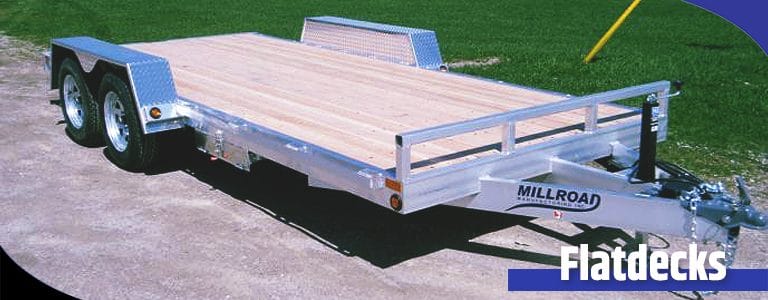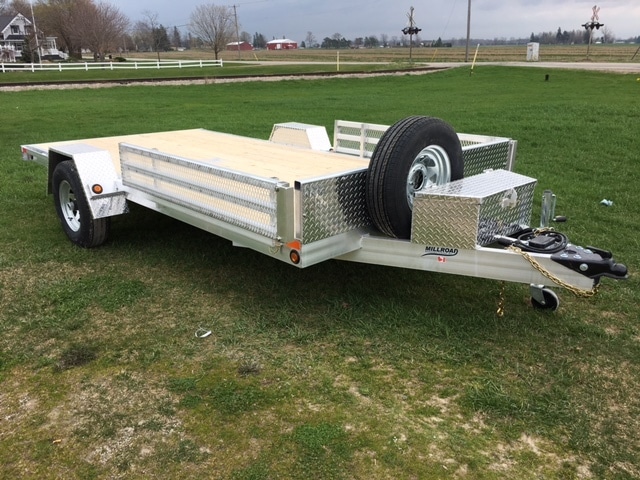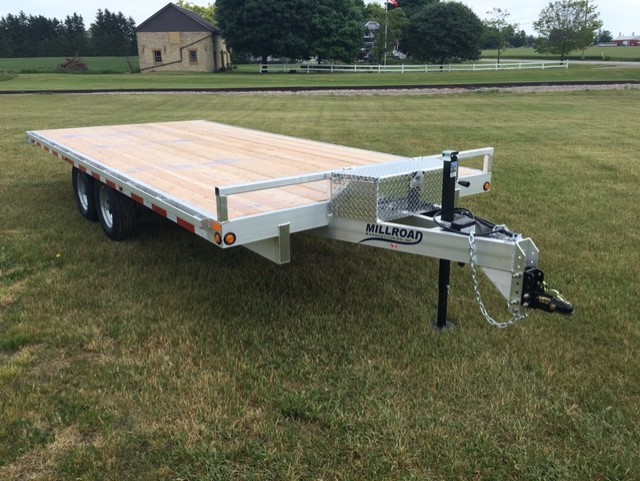
Difference Between a Deckover and Flatdeck Trailer?
For people who are new to hauling, it can be surprising to see just how many trailer types and options are available. The good news is that you are not on your own — we are here to make every step of your buying experience easy, from the research to the final delivery. One thing that we get asked about a lot is the difference between deckover and flat deck trailers.
Differences in Design

The two trailers are similar enough that at a glance they look the same. However, there are two ways the platform can be positioned on the trailer, which leads to other differences.
Flat deck trailers are built with the deck between the trailer wheels. This simple design is the most popular type of trailer, so you have undoubtedly seen them on the road. The trailer is not high above the ground, which gives it a low center of gravity and makes it easy for you to load and unload.
Deckover trailers have a deck that sits above the trailer wheels. This makes the platform higher and wider than the traditional flat deck option, giving you more ground clearance and loading space. You typically see fewer of this type of trailer on the road today, but they are becoming increasingly common.
With an understanding of the differences in design, take a closer look at how the two types are used.
Flat Deck Trailer Uses
When you consider all the loads that flat deck trailers are well suited for, it is little wonder that they are the most popular type of trailer. In general, a flat deck trailer is a great option for any of these loading and hauling circumstances:
- Any equipment or vehicles that will be hauled fit between the wheels of the trailer. This includes small vehicles such as ATVs.
- Loading can be done around the wheels and fenders.
- Loading occurs in a tight space. Because the platform is so close to the ground, only a short ramp is needed to load vehicles onto the trailer. Handloading often doesn’t require a ramp at all since it is only a small step onto the platform.
- The weight of the trailer is a significant concern. A flat deck trailer is lightweight, which lets you haul more while staying within your towing limits.
- Hauling occurs over roads and relatively smooth surfaces that allow for low ground clearance.
Deckover Trailer Uses

Deckover trailers are generally more appropriate than flat deck trailers when your loading and hauling have particular requirements:
- The equipment or load is bulky. The platform of deckover trailers is wider, making it necessary for loads that are more than 80 inches wide. The additional width also makes the total platform space larger, making it easier to accommodate bulky loads even if no single part of the load is overly wide.
- The fenders or wheels could get in the way during loading, such as when loading lumber or using a forklift to load pallets.
- Loading occurs in a space that is large enough to accommodate a longer ramp, which is necessary because the platform is higher.
- Hauling occurs over rough terrain that requires a higher ground clearance.
Choosing the Right Trailer for Your Needs
Now that you understand more about flatdeck and deckover trailers, you are one step closer to getting the right trailer for your needs. As you are looking at your options, reach out to us. The service we provide here at Millroad goes far beyond selling trailers. We have experts who listen to your needs and then work with you to find the best trailer for your situation. With all the trailer types and customization that we offer, we can build something that is designed with your exact situation and feedback in mind.